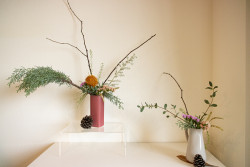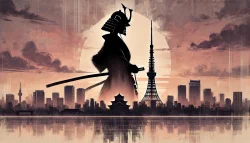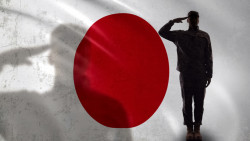
December 2, 2009
Honshu’s Holy Hotels
Simon Rowe seeks serenity and a satisfying meal alongside the monks of Koya-san.
By Metropolis
Originally published on metropolis.co.jp on December 2009

Photos by Simon Rowe
Predawn prayer and pickled seaweed might not be the path to enlightenment for the average overworked salaryman, but for the Buddhist monks of Koya-san, a village situated 60km from Osaka in the mountains of southeastern Honshu, it’s a recipe for success. Here on the lofty pine-forested hillsides, Buddha lives. At least in spirit, anyway.
Koya-san is home to Shingon Esoteric Buddhism, one of Japan’s oldest religious traditions. And though you may never see a Bodhi tree or figure out “the sound of one hand clapping,” its narrow winding streets, temple precincts and jovial monks provide the same mind-soothing effects.
Clean and modern Nankai express trains depart hourly from Osaka’s Nankai Namba station, making the 90-minute run through the sweltering suburbs and into the cool, breezy valleys of Koya-san. For the last two kilometers, a cable car inches up through tunnels of giant bamboo, fan palms and the odd rain shower to reach the village.
More than 500,000 people make the journey each year, not hard to believe when you join the veritable tsunami of Nikon-toting pilgrims and tourists that flows through the turnstiles towards the temple precinct each weekend. Late arrivals need not hurry to make the last train back to Osaka. In fact, Koya-san’s biggest drawing card is its shukubo (temple inns), which offer ryokan-style accommodation and charge between ¥6,000-10,000 per person for lodgings and meals.
Stroll through the village streets around 6pm and you’ll find a mini-constellation of chochin lanterns advertising more than 60 shukubo. A healthy income now derives from such lodgings for Koya-san’s business-savvy monks, evident by their latest model Honda mopeds and the occasional pair of Nike Air Max sneakers protruding from their robes.

While tariffs might seem a tad unholy to the budget-minded, on chilly nights in the simple Zen-like comforts of a warm room, few complain. A typical room is lined with tatami and filled with cushions, a TV and futon, and usually opens out onto a manicured garden of bamboo and bonsai trees. Having your futon unrolled, pillows fluffed and roasted green tea with sweet mochi (rice cakes) waiting for you at day’s end is service well worth its price.
Dinnertime offers up another unique feature of Koya-san’s culture: Shojin-ryori, or vegetarian food, is literally the order of the day—every day. For more than 11 centuries the village monks have been dishing up their own brand of temple cuisine to the hungry faithful. Prepared without any meat, fish, onions or garlic, it comes in the form of locally produced goma-tofu, rich soy soups, lightly fried tempura, sweet-and-sour seaweeds, steamed forest ferns and wild potato.
Food for the soul
In Rengejoin shukubo, located near the Nyonin-do temple in central Koya-san, dining comes complete with a Buddhist ambiance. While novice monks dole out steaming rice from huge wooden barrels, pour green tea and keep up a steady flow of cold beer—Koya-san’s monks apparently have no qualms about serving it, since its origins are from the field—you are left to contemplate its vast gold panels depicting Buddha’s epic travels. A less-than-holy haze drifts from the room opposite as the temple’s robed elders smoke thoughtfully on their Camel cigarettes, chewing over the day’s business while novice monks sweep away a small mountain of teacups.

Before retiring for the night, it’s to the communal bath one must go—the final place of purification for the tourist and temple-weary pilgrim. Here you can trade tall tales with fellow travelers while the aches and pains of your swollen feet slowly dissolve in hot spring water.
Comprehending the bath etiquette is tricky at best. If you can work out whose bath slippers are whose, or how to tie your yukata (bathrobe) without it unraveling in front of the head monk, consider yourself enlightened.
Getting there
The Hikari, Nozomi and Kodama shinkansen all travel to Shinosaka station, from which you can transfer to the JR Kyoto or JR Kobe line bound for Osaka. The Nankai express train (about ¥1,100) departs hourly from Osaka’s Nankai Railway Namba station to Gokuraka-bashi station. From there, transfer to the Nankai Koya-san cable car.

Where to stay
Rengejoin, near the Koya-san cable car station, features traditional temple architecture, sand and bonsai gardens and rooms with modern amenities. Breakfast and dinner is included in the ¥9,000 per person tariff. Tel: 0736-562233, fax: 0736-564743. The manager speaks English.
The Osaka Tourist Association provides accommodation listings, city maps and train timetables and can assist with shukubo bookings. They have offices at both Shin-Osaka (06-305-3311) and Osaka (06-345-2189) train stations. The Koya-san Tourist Association makes shukubo bookings and provides free temple guides and maps. Their office is opposite the post office in central Koya-san. Tel: 0736-56-2616. Open 8:30am-5:30pm.
Information
For late arrivals, a small booking office with English-speaking assistance is located at the cable car station. They provide shukubo vacancy updates and will make telephone bookings for free. Buses depart the station for Koya-san every 20min; one-way fare is ¥200. For further sightseeing info and travel tips, contact the Koya-san Tourist Association (see above).
[geo_mashup_map]







